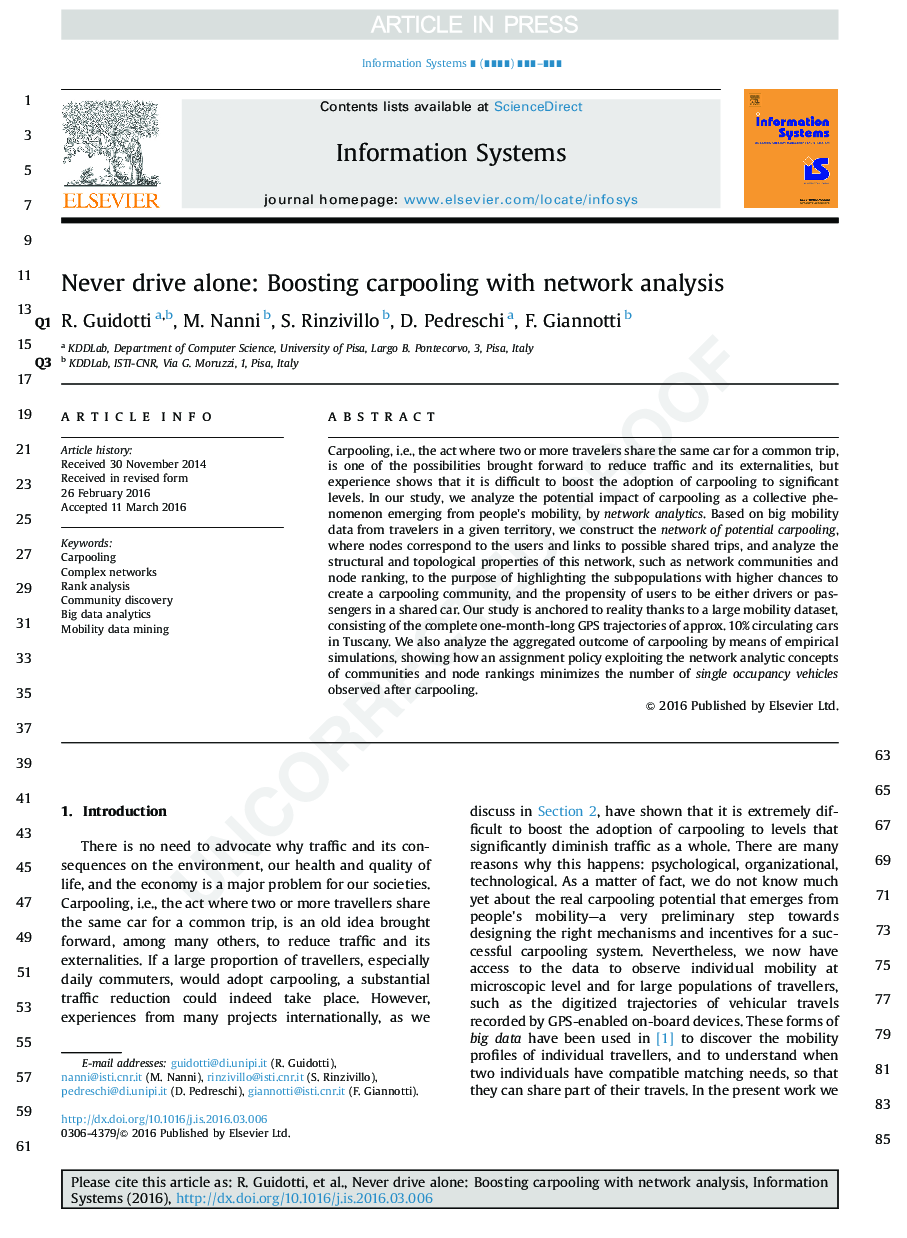| Article ID | Journal | Published Year | Pages | File Type |
|---|---|---|---|---|
| 4945158 | Information Systems | 2017 | 21 Pages |
Abstract
Carpooling, i.e., the act where two or more travelers share the same car for a common trip, is one of the possibilities brought forward to reduce traffic and its externalities, but experience shows that it is difficult to boost the adoption of carpooling to significant levels. In our study, we analyze the potential impact of carpooling as a collective phenomenon emerging from people׳s mobility, by network analytics. Based on big mobility data from travelers in a given territory, we construct the network of potential carpooling, where nodes correspond to the users and links to possible shared trips, and analyze the structural and topological properties of this network, such as network communities and node ranking, to the purpose of highlighting the subpopulations with higher chances to create a carpooling community, and the propensity of users to be either drivers or passengers in a shared car. Our study is anchored to reality thanks to a large mobility dataset, consisting of the complete one-month-long GPS trajectories of approx. 10% circulating cars in Tuscany. We also analyze the aggregated outcome of carpooling by means of empirical simulations, showing how an assignment policy exploiting the network analytic concepts of communities and node rankings minimizes the number of single occupancy vehicles observed after carpooling.
Related Topics
Physical Sciences and Engineering
Computer Science
Artificial Intelligence
Authors
R. Guidotti, M. Nanni, S. Rinzivillo, D. Pedreschi, F. Giannotti,
